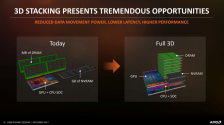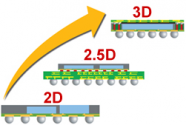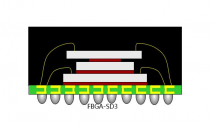What we all remember about Huawei smartphones were it was one of the premium brands, leaders in technology (its own Kirin chip, first to use 5nm process along with Apple), pioneer in smartphone camera, etc.
This 3D stacked 14nm, however, would not and would not be meant to get Huawei back to smartphone business where it left off. It's simply to get Huawei back to the game. Huawei still needs to be in the smartphone business, for its Harmony OS and its ecosystem as well as 5G. Hopefully, it would gradually get back to the leading position, but it would take time.
From what i know Huawei intends for its 14nm 3D Stacked Chips to be comparable in performance to a regular 7nm Chip.
Of course such a fabrication process will result in size issues as well as excess heat generation.
They intend to overcome these issues of excess size through 3D Stacking and Heterogeneous Integration.
YMTC has sucessfully used 3D Stacking in producing its products and they have also developed X Tacking Technology which some are saying Huawei could License.
Recently as well a number of Chinese companies have developed Advanced Packaging Equipment which shows that they are serious in going down that path.
I suppose a Huawei SOC that is comparable to a regular 7nm SOC would make the Huawei Mobile Phone a Mid Range 5G Phone.
This product will allow Huawei to get back into the business of selling 5G Phones and to promote its Harmony OS locally and worldwide.
Huawei already has a 40nm FAB up and running which they intend to upgrade to 28nm and 20nm next year. So they have got the ball rolling and are serious about producing their own SOCs.
That makes sense, it's about what I thought.
Thanks
Just wanted to confirm it wasn't that we were somehow expecting them to produce flagship level smartphones with 14nm stacked lol.




